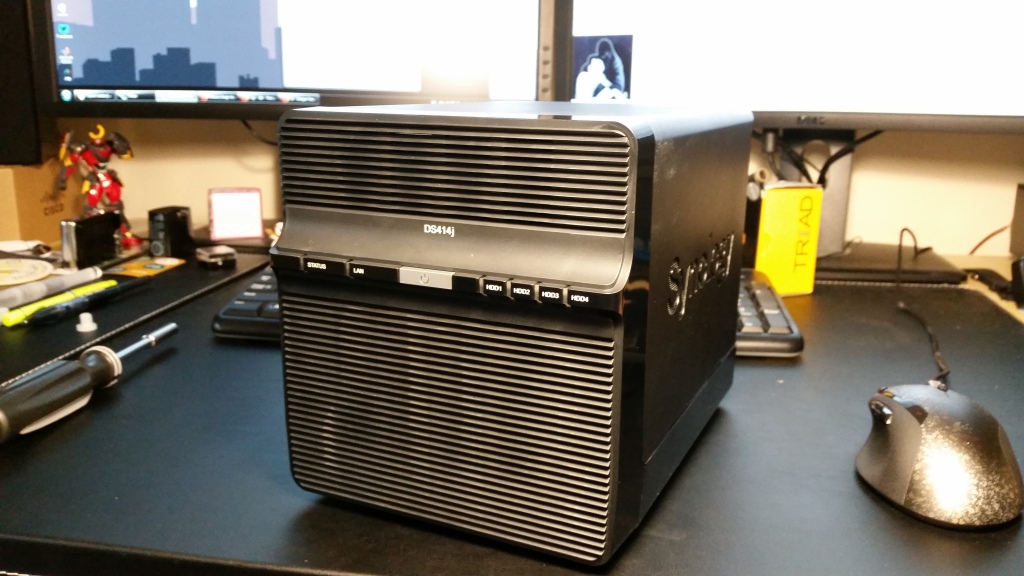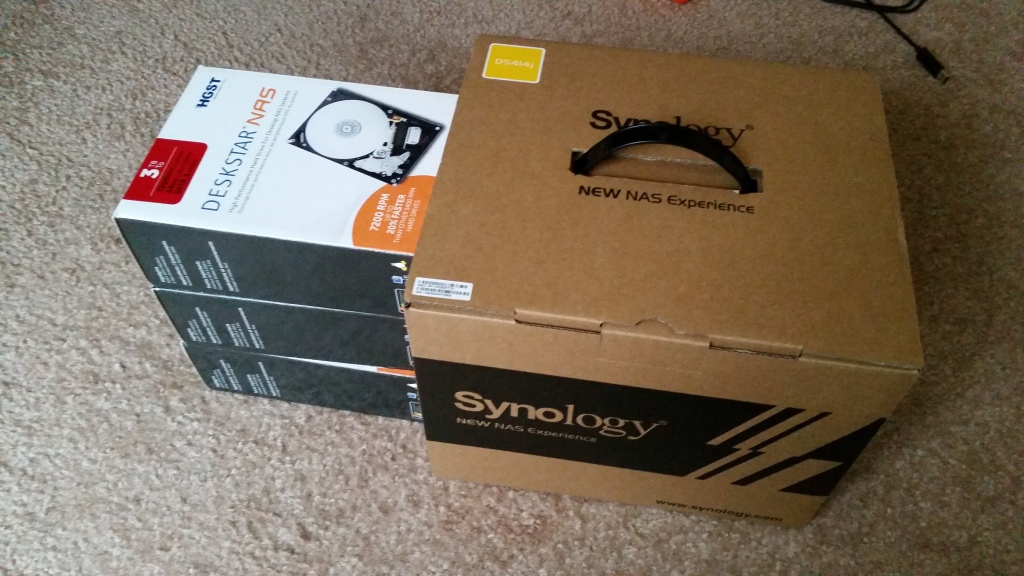Recently, I have been caught up with working on my thesis and realized I probably won’t have the time for a major project until after I graduate. So lately, it has been all about the weekend projects and I finally got around to a Network Attached Storage (NAS) together. I’ve been waffling over building one for over a year now and I finally sat down, did some comparisons on parts, ordered the components and put it together.
At first, I was going to build my own NAS from regular computer components. There’s been a few guides floating around for doing just that and I originally built a parts list based off of a few guides. Total cost for that system without drives was right about $360. At the urging of a friend, I decided to include a non-DIY NAS into the comparison to see how it fared. I wanted the capability for at least 4 drives and not needing an infrastructure-ready system, I settled on the Synology DS414j as my contender.
That is when I started switching sides. Right away, the Synology has a warranty. Hardly something I can provide if my DIY solution went bad after about 6 months. I was going to use a Fractal Design Node 304 case originally as the looks were worth the extra cost in my mind. But even that case was going to be larger than the DS414j. Power was questionable as I had no way of really knowing how much power a DIY NAS would use without putting it together and measuring. My rational mind came to the conclusion that a purpose-built NAS was probably going to be more efficient than the general-purpose power supply in a DIY solution. The DS414j has a published spec of 8.5W during hibernation. I doubted I could beat that. Finally, the cost for a warranty, smaller form factor, and potentially a little power savings was only $30. I picked up the DS414j plus three 3TB drives.
Installation was very simple. Some screws to open the case up, screws into the drive cages, push them in and you’re done. The initial setup was also very simple. I could immediately access the NAS through a browser and handled the configuration through that. Formatting did take some time but not as much as I was anticipating I elected to stick with Synology’s Hybrid RAID which in a 3-drive setup is similar to RAID 5, giving me a 5.41TB usable capacity. The benefit is that adding a fourth drive down the line should be relatively painless. And like that, I had a NAS in the space of an afternoon.
I’m using my NAS as a pure backup solution. It turns on once a week to update the folders I specified. I am using the Windows Backup and Restore program for this as it was free and does the job. Synology has a backup application of its own but I found it to be non-intuitive and the online support was a little lacking. It was more meant to backup what was on the NAS to some other service instead of me backing up data on my PC to the NAS. Regardless, the Windows program does the job.
In the end, I am happy with the Synology. It does the job, takes up very little space, uses very little power and unless it is updating the backup, totally silent. And now, I am less in danger of losing my thesis, a win-win in my book.

